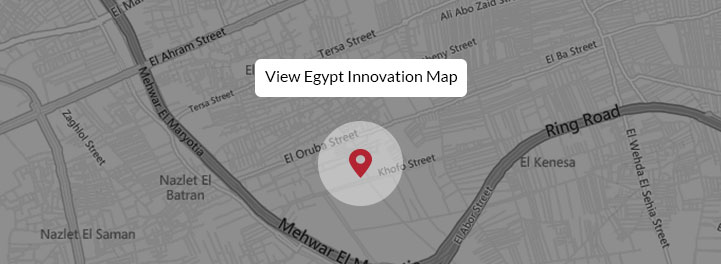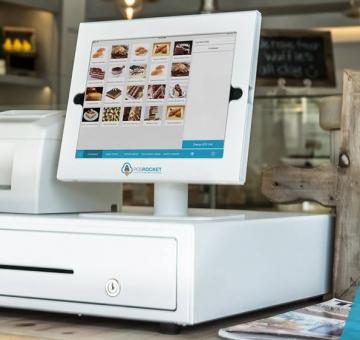E-commerce in Egypt: A paved or a bumpy road?

Photo credit: Fashion Luxury Stores Blog
The countdown begins, families rush to buy school supplies. Aisles are almost empty as the store runs out of popular supplies; people queue up in front of cashiers whining about the line moving slowly. Luckily for queue haters, they can choose a few clicks online instead.
With the rise of e-commerce around the world and in Egypt, the future of retail industry seems to be taking a different route than its past.
E-commerce; When did it all start?
Electronic commerce is using the Internet to trade in products or services, which can either, be business-to-business (B2B) or business-to-consumer (B2C).
 Let's explore the power of e-commerce in Jeff Bezos's story; In 1994, a 30-year old relentless fund manager sets out west raising funds for a small online book shop originally called cadabra.com, now amazon.com. In 1995, Jeff launches the website and warehouse in his garage in Bellevue that managed to surpass $150 million in annual sales by its third year- a milestone that Walmart founder Sam Walton needed 12 years and 78 stores to reach, according to a study by Charles Heath at Xavier University.
Let's explore the power of e-commerce in Jeff Bezos's story; In 1994, a 30-year old relentless fund manager sets out west raising funds for a small online book shop originally called cadabra.com, now amazon.com. In 1995, Jeff launches the website and warehouse in his garage in Bellevue that managed to surpass $150 million in annual sales by its third year- a milestone that Walmart founder Sam Walton needed 12 years and 78 stores to reach, according to a study by Charles Heath at Xavier University.
However, the history of e-commerce goes way back to 1979 when English entrepreneur Michael Aldrich demonstrated the first online shopping system. 1981 was the rise of B2B online shopping when Thomas Holidays launched their first online shopping platform also in the UK.
Afterwards, in 1984 the first B2C online shopping system, Gateshead SIS/Tesco, was launched. The following decade was rather eventful for e-commerce. Companies started to use the internet for transactions. By 1995, Amazon and e-bay, two of the most important e-commerce platforms, were launched.
Today, numerous platforms, such as Alibaba, Tesco and Shopify offer online shopping services to users around the globe, while most brands have launched online stores to go in parallel with their offline stores.
According to statista.com, an online statistics portal, 40% of Internet users worldwide have bought products online, an estimate of more than 1 billion online buyers.
Egyptian E-commerce Market today
![]()

The Egyptian Ministry of Communication (MCIT) estimates 46.2m Internet users around the country, which marks more than 54% of the total population. The country ranks 14th worldwide, according to InternetLiveStats.com.
In 2006, the Syrian entrepreneur Ronaldo Mouchawar launched Souq.com, introducing e-commerce for the first time to the region of 110 million Internet users, according to estimates by PayPal. The website has attracted over 6.2 million registered users between sellers and buyers in 5 countries, paving the road for other platforms to be launched.
In 2012, the German company Rocket Internet funded a team of entrepreneurs to launch Jumia, an online shopping website which has warehouses in 9 countries including Egypt. Despite the strong competition with Souq.com, Jumia has managed to establish a strong customer base in Egypt. With about 300 employees, the company was able to attract more than 100,000 users, and offer more than 60,000 product. This year, the company has pumped $20m investments in the Egyptian market.
While Souq and Jumia remain the biggest e-commerce portals in Egypt, the two competitors have not monopolized the market. Babyboons, an example of an e-commerce platform that was able to rise to the market in 2013, targets the segment that will always keep growing: Mothers of newborn babies. Several platforms were able to find a place for themselves, others are still on their way.
Challenges facing e-commerce in Egypt
With all the promises e-commerce carries, challenges that push people away from e-commerce threat this progress. According to a report by the Ministry of Communication and Information Technology (MCIT), more than 56% of the total the Egyptian household lack the awareness about e-commerce.
 In addition to problems in logistics, legal and payment problems stand as major challenges in the face of e-commerce. The lack of legal recognition of electronic contracts marks for at least 24% of the household and the lack of convenient online payment methods marks for 16%, according to MCIT. Companies, however, have worked on several solutions to address these challenges, such as offering cash on delivery as a payment option, and maximizing their marketing campaigns to reach out for more potential users and raise awareness about ecommerce.
In addition to problems in logistics, legal and payment problems stand as major challenges in the face of e-commerce. The lack of legal recognition of electronic contracts marks for at least 24% of the household and the lack of convenient online payment methods marks for 16%, according to MCIT. Companies, however, have worked on several solutions to address these challenges, such as offering cash on delivery as a payment option, and maximizing their marketing campaigns to reach out for more potential users and raise awareness about ecommerce.
Such challenge was an opportunity for companies, such as Fawry and Pay Fort, to pop up all around the region with innovative solutions and find their way to penetrate the relatively new market.
Despite the fact that e-commerce marks for only 1$ of each 11$ spent in retail, this share has grown from a total spending of $1.2T in 2013 to $1.7T in 2015, and it is expected to grow to $2.3T in 2017, estimates eMarketer. Such growth rate secures good opportunities to those who are testing the waters or those who are ready to take the plunge and dive into the e-commerce business.






































































EgyptInnovate site is not responsible for the content of the comments